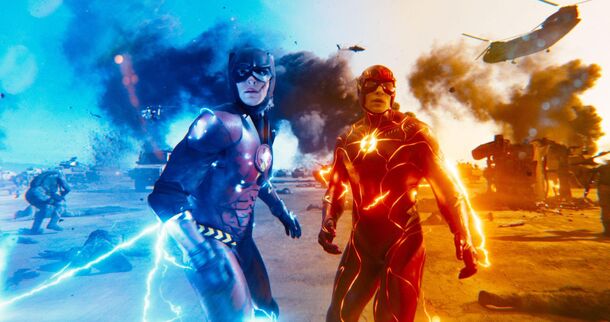The Flash Pushed Its CGI Artists Beyond Any Limits, and It Shows

Following the scandal around the movie’s visual effects, one of the artists went on TikTok and shared the terrible conditions he and his co-workers were put in.
We don’t want to start this topic all over again, so we’ll skip the intro where we are usually recalling all the things that were wrong with The Flash when it was released, alright? Today, we’ll only focus on the movie’s CGI instead.
Even prior to The Flash’s full-blown release, many fans and critics were worried about the visual effects of the movie — judging by the trailers and promos, the VFX was questionable at best, and people were voicing their concerns.
There was hope that this would change by the time the movie hit the theaters… But it didn’t.
The visual effects are a massive eyesore throughout the entire duration of The Flash, and their quality varies from “kinda OK” to “straight-up terrible.”
While this is just one of the many problems with this film, it’s the most noticeable: you may not know why some of the cameos were immoral, but you’ll notice the horrendous VFX.
Andy Muschietti, the director of The Flash, tried to cover up the massive budget hole in the wall by claiming that the movie’s CGI was intended to look “weird” since that was how the Scarlet Speedster saw the distorted world around him — but it’s safe to say that literally no one bought it. Even distorted VFX needs quality, after all.

Now that it’s been over two weeks since The Flash’s release, the complaints about its visuals are still out there, and Zach Mulligan, one of the CGI artists of the movie, took it upon himself to address the audience and share the reasons behind it.
According to Zach, he and his co-workers were put into awful working conditions.
“The only thing they care about is pleasing their shareholders on the next earnings call. They’ve managed to increase the output of superhero movies that are still making billions of dollars, and they’ve reduced the time it takes to make them. Studios could easily space out their projects to give these super-talented and hard-working artists more time to work on the film. But that’s just not in the best interest of the shareholders,” explained Mulligan in his video.
The artists were constantly pushed to work quicker, and the flow of tasks was insane: Zach claims that he was always asked to put in extra hours every day, and he left the project after three months of this non-stop crunch time.
While he escaped such a fate, other artists who stayed were worked to the ground and never had the actual time to finish any of their tasks properly — and this is why when we look at The Flash, all we see is the shame that the movie turned out to be.